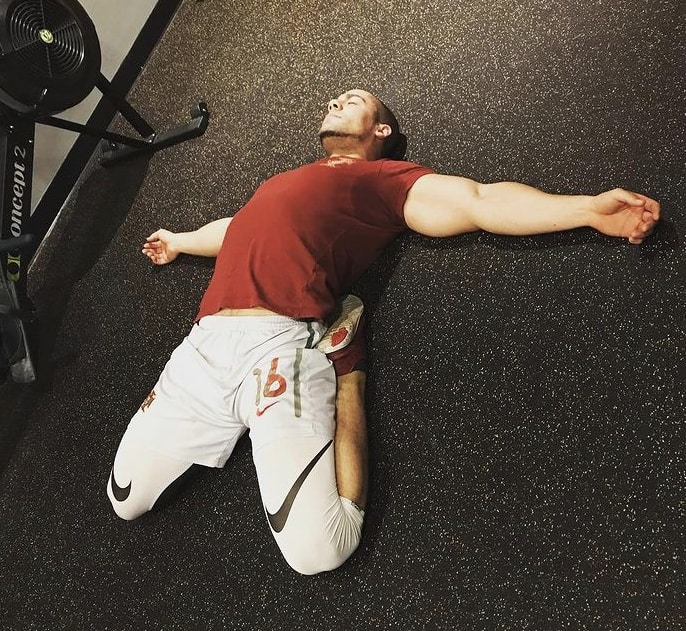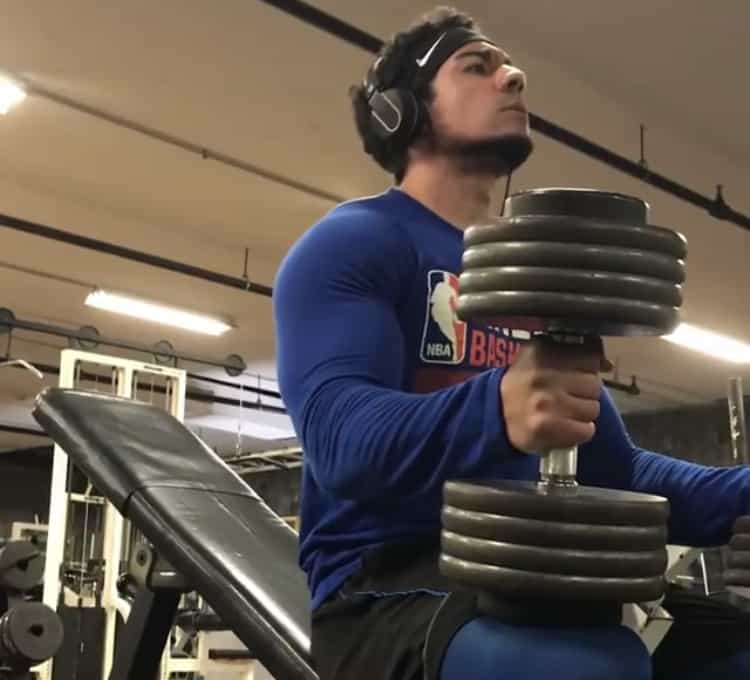
The day after a workout you may experience the phenomenon known as DOMS, or delayed onset muscle soreness. Many people perceive this as a badge of honor since they consider soreness an indication of a job well done. But is soreness a direct indication of muscle growth itself?
Muscle damage, or soreness, is not highly correlated with muscle growth. It is a factor, but largely an irrelevant one. Mechanical tension is a far greater indicator of long term muscle gains than soreness.
Mechanical tension is the ability to properly put the muscle under a heavy load. If you lift with good form, a full range of motion, while utilizing reasonably heavy weight, then you have put the muscle under high mechanical tension.
So what is soreness all about? Where does it come from and why do we feel it after certain workouts but not others?
Many people associate muscle soreness with a buildup of lactic acid. But this is completely untrue. In fact lactic acid, or lactate, actually helps prevent muscle soreness.
It’s true that muscles become acidic during strenuous workouts. This is due to a lack of oxygen. When you perform exercise at high intensity, you start huffing and puffing in a desperate attempt to get more oxygen to the muscles to eliminate the waste products caused by this exercise. It’s not a bad thing; obviously pushing the intensity in a workout is important to get results. It’s just a natural bodily reaction.
If you’ve ever felt a burning sensation during a workout, it is due to a buildup of acid in the muscle. But it’s not lactic acid, it’s free flowing hydrogen. This hydrogen comes from metabolic reactions that occur during exercise. If you’ve ever seen a pH scale, pH stands for potential hydrogen. The more acidic the substance, the higher concentration of hydrogen it has.
Lactate has the ability to attach itself to a hydrogen ion, thus removing it from its free flowing state. So not only is lactate not causing muscle soreness, it’s acting as a buffer!

What Types of Exercise Cause Soreness
There are a few factors related to exercise selection that lead to muscle soreness. If you try a brand new exercise, odds are you will be sore. Even a variation of an exercise you normally do could lead to soreness, for example changing foot position on a barbell back squat.
Even if you try a new sport that requires no heavy lifting you will likely be sore. Imagine the first time you went skiing or snowboarding. You felt pain in muscles you probably didn’t even know existed.
A novel training stimulus causes soreness as does one that isn’t novel but hasn’t been performed in a long time. If you go for a run outside in the spring after taking the winter off odds are your calves will be super tight the next day.
A major factor in developing muscle soreness during resistance exercise occurs during the eccentric stage of the movement. Eccentric means the stretch portion of an exercise. It is the opposite of the concentric phase where muscle contraction occurs.
Examples of eccentric movement include lowering the bar towards your chest on a bench press or lowering a dumbbell towards your hip on a bicep curl. Some people perform slow tempo reps where they accentuate the eccentric movement.
How to Prevent Soreness
Studies have been performed to examine what tactics help to prevent DOMS. The problem is that there is no way to measure DOMS aside from subjective questionnaires. Even if you and I are asked to rate soreness given the same set of standards, our interpretations of pain are still different.
This study showed that a warm up before exercise reduces future DOMS but not a cool down. But anecdotally I and many others can say a cool down has reduced it. Light stretching post workout, or a more comprehensive stretch routine later in the day may also help.
Studies have shown mixed results on dietary interventions and their effect on muscle soreness. But they typically look at specific nutrients like amino acids, omega-3’s, and phytonutrients like polyphenols rather than the complete makeup of a person’s diet. The study parameters make sense in theory, as these specific nutrients combat things like oxidative stress and inflammation. However, I’m a believer in looking at the diet as a whole rather than extrapolating a single nutrient.
Why Soreness Doesn’t Matter
As mentioned earlier, muscle soreness has very little effect on muscle growth. I would argue that muscle soreness, in the long run, would negatively impact muscle gains. If you are sore it limits your performance. Poor performance in the gym puts a cap on your gains.
Even if the body part that is sore isn’t the one being worked that day, it still matters. Muscles work in unison on many exercises. A tight back could affect abdominal exercises. Tight triceps could affect shoulder presses.
So before you wake up feeling unaccomplished because your muscles aren’t sore, think of everything discussed here and remember why it doesn’t make a difference.
